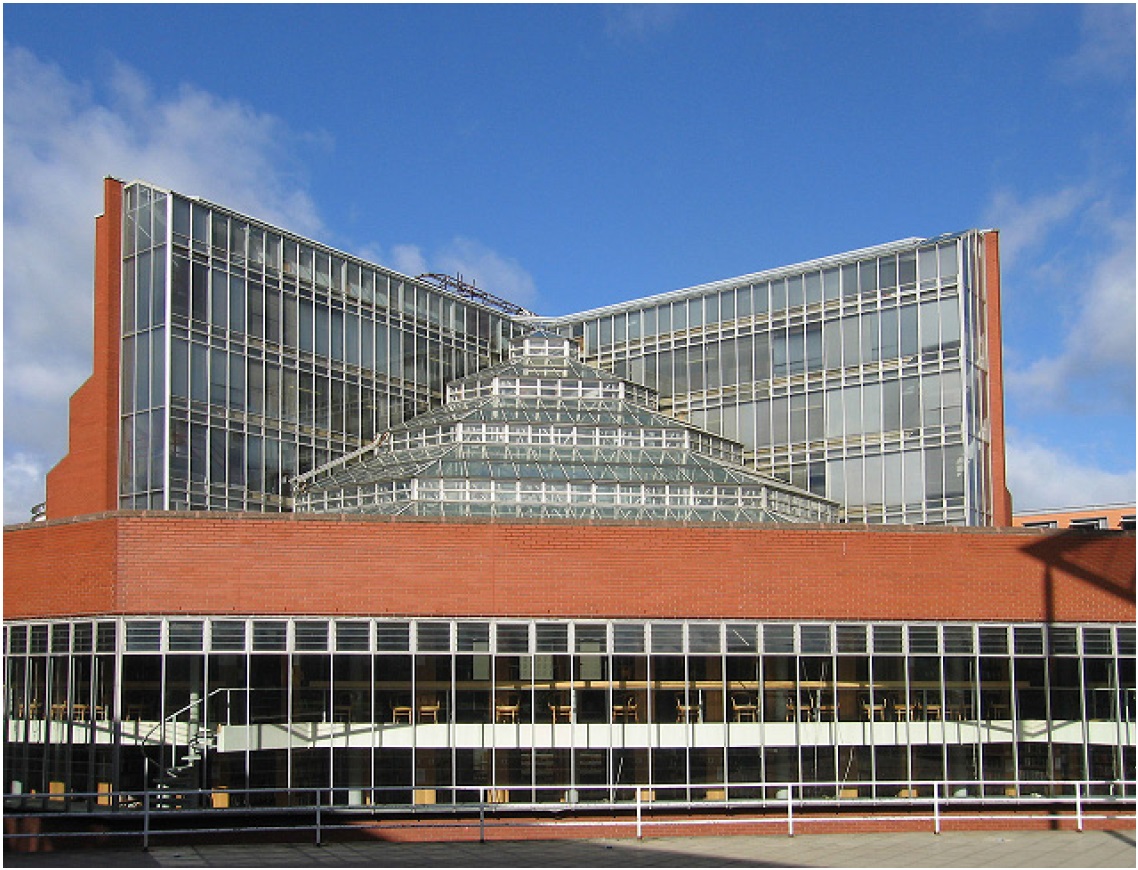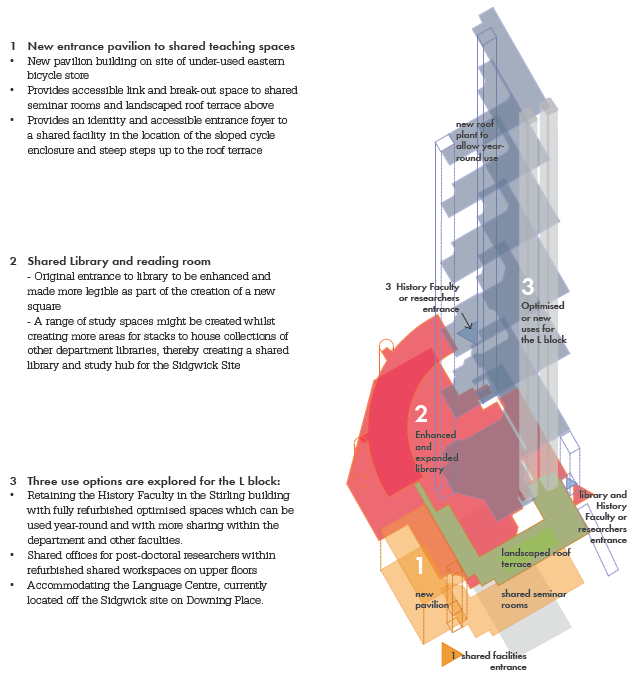Stirling Building [photo by Allies and Morrison]
This document focuses on strategic options for the Stirling Building in greater detail, in the context of a Statement of Historical Significance for the building, the opportunities explored across the wider site and space optimisation strategies considered for other individual buildings.
The feasibility studies in the report explore how a greater level of internal spatial intervention might produce a building that meets the needs of its current faculty and wider users in the Sidgwick Site. The study for the Stirling Building considers the feasibility of the following series of options within the context of the wider masterplan.
A new pavilion building
Improve legibility of the public realm and enhancements to all entrances. The creation of a new accessible pavilion to link to enhanced shared teaching spaces in the lower ground floor.
Seeley Library
The Seeley Library to be retained as an enhanced and optimised library hub to provide a range of study and work spaces, whilst providing space for history and other collections.
Consider whether improvements would enable the History Faculty to remain in the building
An optimised building for the History Faculty that would encourage sharing and collaboration both within the faculty and other departments and faculties by considering more efficient uses of the existing spaces whilst making improvements to the fabric and services of the building.
Researcher hub in the upper floors of the L-block
Provision of a shared research hub and library facility, with the potential to include the Language Centre (currently located off-site on Downing Place), with shared teaching / meeting spaces for other faculties, involving significant changes to create more open plan layout and improve environmental conditions.
The illustrative optimisation and alternative use feasibility studies provide a series of options which enable the University to gain a better understanding of the opportunities that exist for the refurbishment of the Stirling Building. It is hoped that these studies will facilitate a strategic decision to be taken which would ensure a viable long-term use for the building.
As the Stirling Building is Grade II listed, the feasibility options studies are considered in the context of a Statement of Historical Significance produced by Beacon Planning in association with Alan Berman and William Fawcett, which assesses the historic and architectural significance of the key internal and external spaces and elements in the building.
Source: Allies & Morrison Masterplan report Volume 3
For further information, see Masterplan report Volume 3 under Reports (access restricted to University of Cambridge staff, requires Raven username and password).


